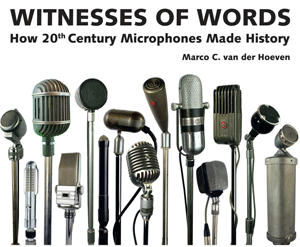|
You will hardly notice that this is a microphone: the Protona P 55 Minofon 'watch' has a hidden microphone, instead of the regular clockwork.
In 1951 Protona, a German company had invented the P 51 Minifon; a miniature wire recorder for use as an office dictation machine.
The inventor was dissatisfied with the fact that his verbal agreements were later incorrectly written down. He wanted proof of his words. The Minifon recorded up to four hours on a very thin 0.005 mm diameter nickel-chrome wire that had an amazing length of 2.9 kilometers.
A number of microphones were supplied to be used with the recorder, but when Protona updated the recorder into the P 55, in 1955, the company also introduced a microphone hidden in a luxurious looking watch. The back-plate is perforated along the rim, to allow sound to reach the crystal element.
It was the height of the Cold War and Spies welcomed the idea of a small tucked away recorder with a camouflaged microphone. The wrist-watch had to be worn on the left arm, the cable from the microphone was attached through the jacket sleeve to the recorder, which fitted an average sized pocket, or could be operated from a fabric shoulder type carrying case, under a coat. It made a great spy tool even though the capsule left no room for a clockwork inside. Many secret services were satisfied users of the Minifon P 55 watch.
The Minifon directly inspired the invention of the 'Black Boxes', used in commercial aviation since the early sixties. The indestructable quality of the metal wire guarantees that the recorders can be rerieved after accidents and deliver valuable information on the last hours of flight.
This is one of the types that feature in my book Witnesses of Words, which was recently released. More information about that can be found at www.witnessesofwords.com

|
|